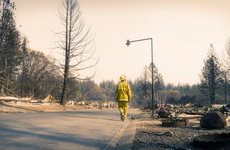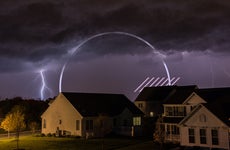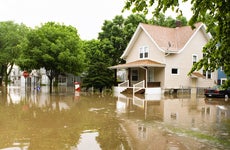How to prepare your home for a natural disaster
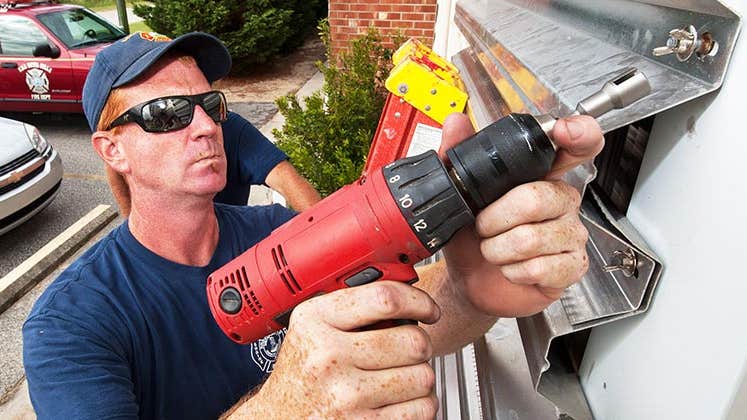
The Bankrate promise
At Bankrate, we strive to help you make smarter financial decisions. To help readers understand how insurance affects their finances, we have licensed insurance professionals on staff who have spent a combined 47 years in the auto, home and life insurance industries. While we adhere to strict , this post may contain references to products from our partners. Here's an explanation of . Our content is backed by Coverage.com, LLC, a licensed entity (NPN: 19966249). For more information, please see our .
Natural disasters can have a devastating impact on homeowners and communities. From hurricanes to earthquakes, extreme weather events can cause substantial property damage that is often costly to repair. As a homeowner, one of the best ways to financially protect yourself and your family is to understand your homeowners insurance policy and what types of natural disasters it covers. Doing some research on the history of natural disasters in your area can also clue you in to potential risks and reveal if there are certain supplemental coverages worth considering. While you may not be able to completely avoid natural disasters, taking proactive steps like reviewing your policy, preparing your home and creating an emergency plan may help mitigate financial losses.
How natural disasters damage homes
Natural disasters can cause extensive damage to homes in their path, including broken windows and water or structural damage. According to the Insurance Information Institute, insured losses due to natural disasters totaled nearly $100 billion in 2022, up slightly from $92 billion in 2021. Here were some of the most common natural disasters and their associated insured loss estimates from 2022:
- Severe storms (aka strong thunderstorms): In 2022, convective storms resulted in over $29 billion in insured losses.
- Earthquakes: A joint study from the United States Geological Survey and the Federal Emergency Management Agency found that earthquake damage in the U.S. amounts to approximately $14.7 billion annually.
- Floods: In 2022, 15 flooding events totaled $3.3 billion in insured losses.
- Wildfires: There were 26 wildfires in 2022 that totaled $8.9 billion in insured losses.
- Hurricanes: In 2022, there were three recorded hurricanes or tropical storms that resulted in $53.2 billion in insured losses.
- Winter storms: There were 13 winter storms in 2022, which totaled $4.1 billion in insured losses.
Tips to prepare your home for a natural disaster
The best time to prepare for a disaster is before it happens. To protect a home from a natural disaster, being proactive is key. Building the home with wind-proof and fire-proof materials offers some of the best protection, but it is not essential. Some simple additional steps can be taken to keep a home safe before a natural disaster strikes.
Reinforce doors and windows
During a hurricane or tornado, doors can fly off and loose debris can break windows. Consider installing wind-resistant doors and windows or storm-proof shutters to keep them intact during a storm. For a temporary fix, board up windows and doors with plywood before a storm is expected to hit.
Find water, gas and electrical lines
When a storm is on the horizon, a homeowner might receive emergency instructions to turn off the home’s water, gas and electricity connections to prevent flooding and fire hazards. Water and power lines, if left unchecked, can cause additional damage, and as such, before a disaster happens, it’s important to know where those lines are located and how to shut them off. If there is an evacuation order, disconnect water, gas and electrical lines before leaving.
Use sandbags
Sandbags divert water, and placing them around doors or in flood-prone areas is an effective way to keep flood water from seeping into a home during a hurricane. This can be especially crucial during a storm surge. The sandbags should be stacked at least one foot high for adequate protection.
Secure outdoor furniture
If there is outdoor furniture on a porch or patio, make sure everything is tied down and secured before a storm hits. Loose items, like sporting equipment, grills or umbrellas should be moved inside, if possible. Double-check that toys, yard tools and other small items are not left outside before a storm. These items could easily cause additional damage to your property and possibly damage your neighbor’s property.
Prune large trees
Trees can cause major damage during a storm. Heavy branches that overhang the home’s roof can easily fall and cause significant problems, including injuries to people inside. To keep the roof safe, regularly prune large trees on the property and ask neighbors to keep any trees that cross property lines trimmed. If you are in a fire-prone area, consider leaving space between your house and any foliage that could potentially add fuel to a fire.
Secure heavy furniture to the walls
Earthquakes can be powerful enough to knock over heavy furniture, including appliances like a refrigerator. Items that fall can cause serious injuries, especially to young children. If the home is located in an earthquake zone, secure heavy furniture to the walls with a bracket and be sure nothing near them can be damaged if they fall.
Look for fire-retardant plants
In areas prone to wildfire, plants in your yard could fuel wildfire flames and spread the fire toward your house. As such, creating a defensible zone around your home and making use of non-flammable materials, like cement and stone, may prove helpful. The California Department of Forestry and Fire Protection also recommends planting fire-retardant plants like Rockrose, ice plants, aloe, hedging roses, sumac and shrub apples in your yard. Further, it notes that maple, poplar and cherry trees tend to be less flammable than pine or fir trees. A well-maintained lawn that does not have overgrown, dried-out grass may also help mitigate your risk. However, it’s important to understand that almost anything will burn in certain circumstances.
Prevent pipe bursts during freezes
In areas prone to extreme cold and freezing temperatures, homeowners can take steps to protect exposed water pipes from bursting. One of the most effective ways to do this is to insulate and wrap vulnerable pipes. Pipe-wrapping products like foam tubing or heat tape can be purchased from hardware stores. For especially cold weather, experts recommend fully covering pipes with insulation and then wrapping them again with plastic, sealing the ends with tape. The insulation is meant to provide a barrier against the cold and helps prevent pipe contents from freezing and expanding.
Create an emergency plan
Creating a natural disaster survival guide for your family is important. Some items to keep in an emergency kit might include non-perishable food items and bottled water (in case stores are not open and the water supply is impacted), as well as medications, chargers for cell phones and radios for emergency alerts. Experts recommend keeping a physical document that includes evacuation routes, insurance policy information, local radio stations and a checklist for securing the home. Having a digital and hardcopy version may prove useful in the event of a power loss. Most importantly, every member of your household should ideally know the emergency plan for each type of disaster and where the supplies are located. If applicable, determine a safe meetup place or contact method for family members who may be outside of the house. Keep in mind that cell phones may not be available in the aftermath of a natural disaster.
What home insurance covers during natural disasters
In many cases, home insurance will cover natural disaster claims. Weather events that cause intense winds, heavy rain, freezing temperatures, snow, ice, fire, lightning or falling objects are typically covered under homeowners insurance.
Home insurance will usually cover damage to the home’s exterior and personal belongings inside and outside the home. If it becomes necessary to move out temporarily while the home is being repaired, loss of use coverage should pay for hotel and food expenses.
Here are the natural disasters that are typically covered by home insurance:
- Thunderstorms
- Hurricanes
- Tornados
- Wildfires
- Blizzards
Several natural disasters are not covered by standard homeowners insurance policies, though, including flood or earthquake damage. Homeowners who live in areas where floods and earthquakes are common are encouraged to consider purchasing separate flood insurance and earthquake insurance policies. In some states, damage from hurricanes (particularly wind damage) might be covered, but there may be a hurricane or windstorm deductible that is separate from your normal damage deductible. In coastal towns or other areas prone to hurricane damage, this deductible is usually 1 to 5 percent of your home’s insured value.
Hurricane season 2023
- Hurricane Idalia made landfall in the Big Bend region of Florida as an intense Category 3 hurricane. The city of Perry, Florida, was hit the hardest as Idalia pushed through Florida and Georgia, but Idalia was downgraded to a strong tropical storm as it blew through the Carolinas.
- There were three Idalia-related deaths reported, a much lower number than anticipated since the storm made landfall in a rural part of Florida, and many residents took precautionary measures. Estimates put damage from Hurricane Idalia around $20 billion.
- Homeowners insurance typically covers some forms of hurricane damage but does not cover flood damage. Homes in high-risk areas may need windstorm insurance and flood insurance to avoid potential gaps in coverage. When a hurricane approaches, most insurance companies put a moratorium on increasing coverage or lowering deductibles until the storm passes.
Frequently asked questions
-
-
There are a variety of options available when it comes to choosing the best home insurance company. While it can help to get a sense of the average cost of homeowners insurance, large factors that influence your premium include your area and state. It’s a good idea to do some research to compare providers or speak with a licensed insurance professional to find the right company, coverage and price for you.
-
Standard home insurance policies typically cover damage from natural disasters like hurricanes, tornados, wildfires and earthquakes. However, most policies do not cover flooding or rising groundwater damage. For financial protection in case of a flood, you’ll need to add flood coverage to your home insurance policy or purchase a separate flood policy from a private insurer or the National Flood Insurance Program. Note that standard home policies also do not cover some secondary effects of natural disasters like landslides or sinkholes.
-
Flood insurance is available through most major insurance companies. Many providers sell flood insurance from the National Flood Insurance Program (NFIP), funded by the federal government. Many providers also offer private flood insurance or a flood insurance endorsement, which can provide coverage above and beyond NFIP policies, particularly for personal belongings. Flood insurance premiums are generally paid in full up front and there is typically a 30-day waiting period before new flood insurance takes effect. If you live in an area prone to flooding, you may want to strongly consider flood insurance because if there is already a storm in the forecast, it may be too late to secure coverage. Even if you aren’t in a high-risk area, flood insurance may be a good idea, as even a small amount of water in your home can cause devastating financial consequences.
-
Flood damage is the main type of natural disaster damage not covered by a standard home insurance policy. Floods are only covered if you purchase separate flood insurance through the National Flood Insurance Program or a private insurer. Without flood coverage, water damage from events like flash floods, storm surges or overflowing rivers would not be covered. Hurricane and tropical storm damage is covered under standard policies unless flooding is the main cause of damage.
-
Yes, home insurance premiums typically go up after almost any covered claim. However, the rate increase depends on the severity of the claim and the cost of repairs. Homeowners usually have some options to help offset rate increases, including taking advantage of available discounts or adjusting coverage. It’s a good idea to speak with a licensed insurance professional to ensure that there is still adequate coverage before making any policy changes.
-
Related Articles
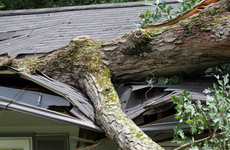
Restoring Stability: Home insurance as a safety net for financial stress during disasters
